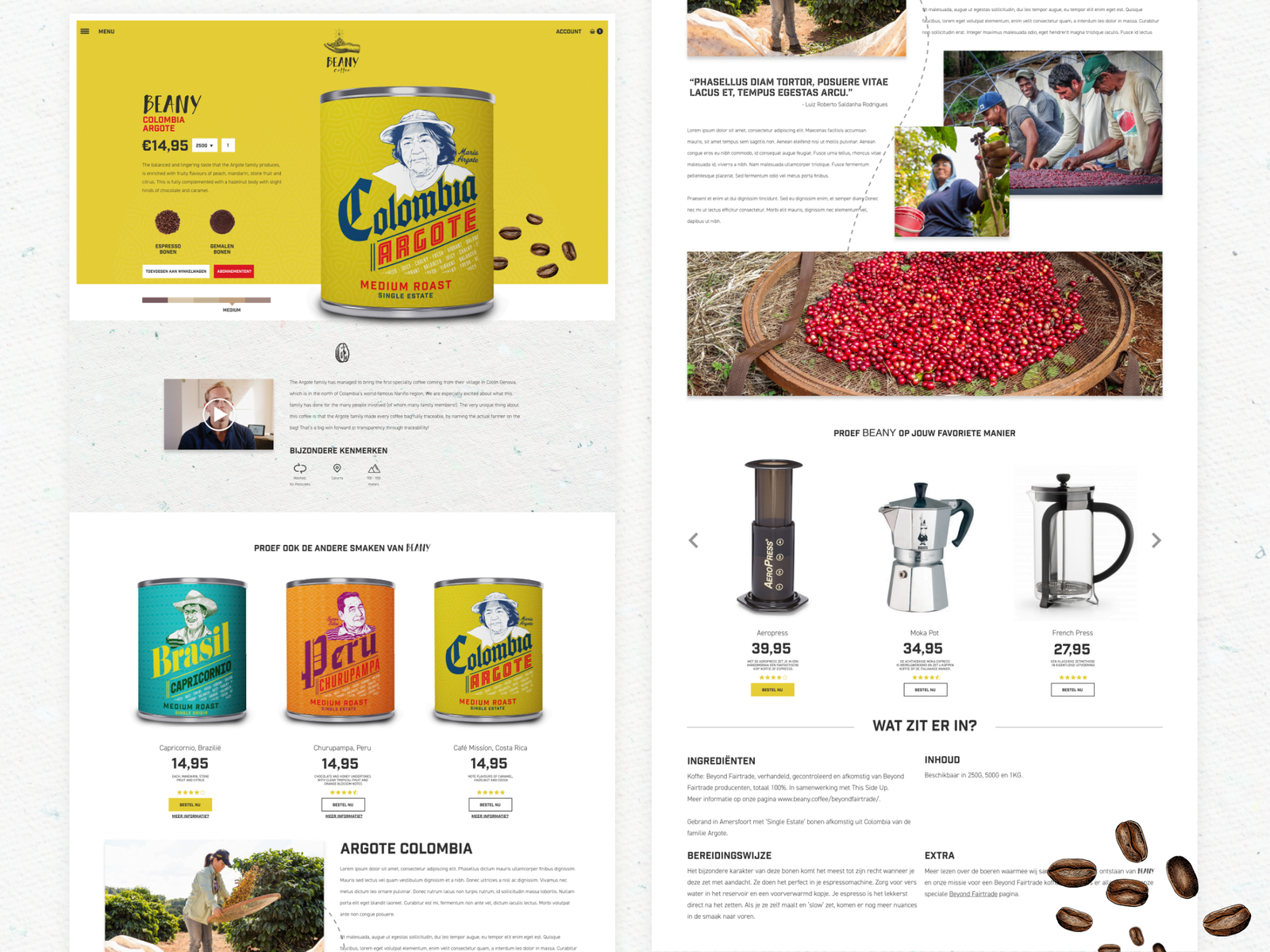This presents countless opportunities for businesses. Never before has it been so easy to reach new customers. Yet it also comes with challenges. How do you make sure that your web shop with efficient UX design brings in customers?
After all, competition on the Internet is enormous. We know by now that having a good product or a great story is not enough. As an entrepreneur, you need to pay attention to dozens of crucial elements. With a webshop, this is no different. Indeed, it is precisely with a webshop that UX design needed the most.
After all, as a company, you are asking customers to make the greatest sacrifice. You ask for their money. Not for an email address or a rating, but for their hard-earned capital. Before visitors even consider this, your website must score in all areas. You can read exactly what to look out for in this new blog

Sebastian Smeenk
Business developer
The four elements of UX e-commerce
Utility
First, what do customers want for their money? One product. Therefore, this is the central element of your webshop. After all, what you sell determines the entire existence of an online shop. It seems obvious, because it is. Your product has a function. It is something that people need and that people put money down for.
Utility determines what people need. How your product will help with this determines how you will set up your web shop. This plays into your use of language, the creation of Unique Selling Points (USPs) and your marketing strategy. Once you have identified for yourself what your product does, you move to the next step: how will your product make people’s lives better? Sell the dream, rather than the feature. With words, images and customer experience.
Usability
Here we refer again to the customer experience. You worked out the digital customer experience in the customer journey map. The process in the virtual corridor should be smooth and make the purchase a piece of cake.
By usability, we mean your digital store. Think of the biggest e-commerce platforms you ever use. If all goes well, these platforms are built so that product ordering goes smoothly. Nowadays, most web shops have been able to adopt this system well. The customer experience is paramount. No unnecessary clicks, no pages that take too long to load, and no cluttered menu. That is the foundation of your e-commerce platform.
Accessibility
Let’s say you sell electronics. You probably assume that visitors and customers to your web shop are techsavy are. This is a false assumption! A web shop should be set up so that everyone can use it. You have to assume that your customers are not experts on your product.
Whether you’re selling bread, phones, floor tiles: make sure you have accessibility. Your online store is a platform that everyone should be able to serve. This does not mean that you should start posting tutorials on how your webshop works. Provide an interface that is uncluttered. Hereby User Interface of great importance. Keep in mind that 88% of online consumers do not returns to a webshop they had a bad experience with. Everyone should be able to browse your online store smoothly.
Convenience
Is your platform accessible to everyone? Good, now you can focus on the next element. An easy experience. This not only means that visitors understand how to search through your store. Above all, it should be an enjoyable experience. At night on the couch while Netflixing, browsing through your web store should be a fun distraction. You know that fine feeling. That you can scroll through and want to keep seeing products. Not even to buy, but just to look. You need to start giving that same feeling to your customers. If you succeed in this, your webshop is going to be a success.
Human Engagement
The customer must see a future with your product. This may sound floaty. Yet it is the truth. You are not selling functionalities, you are selling the future and convenience. Apple is strong on this. Their website is full of specifications, but these are secondary. If you look closely, you can see that Apple places their products in the lives of customers. You suddenly start to realize how nice and cozy your life becomes with an iPad.
Should you then omit functionalities? Absolutely not. But don’t bombard your visitors with too much information. Place specifications in a place where they are easy to find, but most importantly, focus on the convenience of your product.
Core elements
The above tips outline what to look out for as an e-commerce platform. It’s the big picture that you need to keep in mind. How a good UX designer applies this to the platform, read here.
The Home Page
On the home page, your visitors “land.” This has nothing to do with a landing page – customers land there, too, but via a different route. On the homepage, it should be immediately clear what your shop stands for. What does your platform sell, and what does your company stand for? Think about this and put it subtly but strongly.
On the home page, you provide clear overview. This is where navigation begins. The taskbar at the top should clearly show this. Through this taskbar, visitors can find the assortment and use the search bar to search for products.
A home page should give a good impression. In terms of the products you sell, but also in terms of trust. You can also add your USPs on the homepage: free returns, money back within 30 days, and testimonials with reviews. With this, you give visitors the feeling that they have come to a safe and reliable store.
Clear navigation
Important to the entire UX process is digital navigation. This is what you have the header menu for. With a clear search function and categories displaying the assortment, you have the basics covered. The header menu should not be too large on the page. This adds nothing for the customer. Small and subtle, so that the web page in question immediately comes into focus properly and clearly.
Categories
At the top in the header menu, display your shop’s category. These categories should make searching for a product immediately easy. Assume your visitors are searching. Immerse yourself well in your target audience and thought process. This can be done using buyer personas and a customer journey map.
When creating the categories, it is important to use easy terms. We repeat: your visitors and customers are not experts on your products. Your webshop is accessible to everyone, the categories should reflect this.
By the way, clear categories and a good taskbar are also good for your SEO. Google especially wants to direct visitors to web shops that are uncluttered. Good categories help with this.
Products
That high-resolution images are necessary on your product page is an inside joke. With blurred photos, you don’t stand a chance. Within the UX process, the rest is especially important: where do you place the specifications, customer reviews and description?
A product description may be long and detailed, but it is helpful not to put it in the picture right away. It is not smart to bombard the visitor with text. Sum the pluses – three or four in all – with the average customer rating. Combine this with a good image, and you make a good impression.
Other specifications and other information can be tucked away a little further down. If customers are interested, they will scroll down anyway. A little further down the page you can measure the product wide.
What you can put at the top, however, is the CTA: a plus sign with a shopping cart. This way, visitors can immediately see how they can easily purchase the product.
How do you tackle this?
Now that we have listed the key elements and learning lessons, it may seem easy to set up a good web shop. It is, provided you know what you are doing. Setting up a good webshop is not that difficult either. Making an online store a success is another story.
From research shows that on average 90% of e-commerce start-ups fail within the first 120 days. This is a frightening number. As mentioned, the competition is enormous. To make sure your web shop doesn’t fail, it’s best to get help.
dusver has experience in digital transformation. We know exactly how to make your platform a success. How exactly we do this, we’d like to share with you. Feel free to schedule an appointment so we can explain how we can help you. Be among the winning 10%!







